Seorak Beach (설악해수욕장)
9.4Km 2025-10-27
Dwinnaru 2-gil, Ganghyeon-myeon, Yangyang-gun, Gangwon-do
Known for its shallow waters and clean white sand, this beach is a sanctuary for surfers. It is conveniently located near famous tourist sites such as Seoraksan Mountain and Naksansa Temple, making it ideal for sightseeing. Just a five-minute walk from Hujin Harbor, go for a walk during sunset period like Lee Know and enjoy the beautiful sunset in the background.
Naksansa Temple (낙산사)
10.1Km 2025-10-23
100 Naksansa-ro, Yangyang-gun, Gangwon-do
+82-33-672-2475
This ancient temple was built in the 11th year of King Munmu’s reign of Silla (671) by the Buddhist monk Uisang. Naksansa Temple is one of the foremost sights of Yangyang, and one of the most historic sites in the region. Along with Ganghwa’s Bomunsa Temple and Namhae’s Boriam Hermitage, it is said to be one of the three centers of the cult of Avalokitesvara in Korea. Its handsome view overlooking the East Sea has earned it a spot in the Eight Sights of Gwandong (eight famous sights in Yeongdong region of Gangwon-do), documented throughout the ages in many classic literature and poetry. Today’s Naksansa Temple is a product of many restorations and expansions, and has many examples of cultural heritage within its walls, including a 16 meter-tall statue of the Avalokitesvara Bodhisattva. A mountain fire in 2005 resulted in the loss of 20 buildings, including the building that housed its bronze bell. The temple also operates templestay programs available through its website.
Uisangdae Pavilion (낙산사 의상대)
10.3Km 2024-12-26
100 Naksansa-ro, Yangyang-gun, Gangwon-do
+82-33-672-2447
This pavilion is located on a seaside cliff on the way from Yangyang’s Naksansa Temple to Gwaneumgul Cave of Hongnyeonam Hermitage. The word “dae” in Uisangdae refers to a building built at a vantage point for areas with beautiful scenery. Indeed, the view of the East Sea and the coast from Uisangdae Pavilion awarded its recognition as one of the Eight Sights of Yangyang, and a must-visit place for all visitors to Naksansa Temple. Jeong Cheol (pen-name: Songgang), a famed scholar and writer of the poem Song of Diamond Mountains, chose the pavilion as one of the Eight Sights of Gwandong, and the pavilion is today one of the popular sites for sunrise-viewing on the east coast of Korea. Together with Hongnyeonam Hermitage, it is designated as the Scenic Site No. 27 of Korea under the name “Uisangdae Pavilion and Hongnyeonam Hermitage of Naksansa Temple, Yangyang.” Uisangdae is named after Uisang, a respected Silla-era Buddhist monk who is said to have founded this temple in 671 (11th year of King Munmu’s reign of Silla), and many stories of his deeds can still be found in the temple. For instance, Uisangdae is said to be the site where he meditated before founding Naksansa Temple at its present site. Today’s pavilion was restored to its present hexagonal form in 1995.
Osaengnyeong (Hangyeryeong) Pass (오색령(한계령))
10.4Km 2021-04-12
Seo-myeon, Yangyang-gun, Gangwon-do
+82-33-672-2883
This 1,004 m-high pass connects Seo-myeon of Yangyang-gun and Buk-myeon and Girin-myeon of Inje-gun, at the border between Naeseorak and Namseorak. The people of Yangyang know the pass as Osaengnyeong, while in Inje it is known as Hangyeryeong. Yi Jung-hwan, a late Joseon period scholar and the author of the geographical text Taengniji (On Selecting a Village), counted Osaengnyeong Pass as the first and the foremost of the six famous passes in Gangwon-do. Indeed, Osaengnyeong Pass was the route through which essential supplies were transported from Yangyang (in Yeongdong) to Inje (in Yeongseo region), and the rough pass taken by the people of Yangyang on the way to Seoul. Its presence in the folklore of the region can be seen in the popular song Hangyeryeong, which speaks to the difficulties of those who had to climb the pass. Hangyeryeong Road was opened in 1981, and today’s National Road No. 44 is famous for being a driving course through the beauty of Seoraksan Mountain. This is also the starting point of the shortest route to Daecheongbong Peak, the highest peak in Seoraksan Mountain, and the trail to the summit of Jeombongsan Mountain.
Jeongin Hoesikdang (정인회식당)
10.7Km 2024-02-16
32 Naksansa-ro, Ganghyeon-myeon, Yangyang-gun, Gangwon-do
Jeongin Hoesikdang, situated near Naksan Beach in Yangyang, specializes in mul hoe (cold raw fish soup) and saengseon jjigae (fish jjigae). It prides itself on using fresh fish, sourced from nearby ports and used within a day of purchase. The restaurant's signature dish is sanureok maeuntang (spicy rockfish stew). Other popular menu items include modeum mul hoe (assorted cold raw fish soup), seongge albap (sea urchin roe rice), and ojingeo hoe deopbap (raw squid bibimbap). Additionally, soups like gomchi tang (spicy moray eel stew) and haemul tang (spicy seafood stew) are also highly recommended. For guests interested in local attractions, the scenic Naksansa Temple and Naksanhaebyeon Beach are nearby.
Bongjeongam Hermitage (Inje) (봉정암(인제))
10.7Km 2024-02-28
1700 Baekdam-ro, Buk-myeon, Inje-gun, Gangwon-do
Bongjeongam Hermitage, situated at the highest point of Seoraksan Mountain, stands at 1,244 meters above sea level. Due to its elevation, one can witness snow-covered landscapes well into late May. The temple is 10.6 kilometers from the entrance of Baekdamsa Temple and requires 4-5 hours of steep climbing to reach. The view from Bongjeongam Hermitage is breathtaking, but the view of Seoraksan Mountain from the Shrine of Sakyamuni Buddha's Sarira is equally unmissable.
Naksan Beach (낙산해수욕장)
11.1Km 2024-12-27
59 Haemaji-gil, Yangyang-gun, Gangwon-do
+82-33-670-2518
Naksan Beach is one of the most famous beaches in Yangyang, located in Joseon-ri, Yangyang-eup, Yangyang-gun, Gangwon-do. Since its opening in 1963, it has attracted more than 1 million visitors each year, its reputation being rivaled only by the Gyeongpodae Beach on the east coast of Korea. The 4 kilometer-long sand beach contrasts magnificently with the lush pine trees of the area. The water is less than 1.5 meter deep, making it a good place for all ages. Naksanhang Port marks one end of the beach, behind which Naksan Mountain, the location of Naksansa Temple, can be found. The other end has a lake formed at the delta of Namdaecheon Stream, which originates from Seoraksan Mountain. Many cafes, convenience stores, restaurants, and accommodations cater to the needs of the visitors. The beach sees considerable traffic in winter as well, when it serves as a popular venue for sunrise-watching, particularly for the New Year’s Day festival.
Baekchon Makguksu (백촌막국수)
11.8Km 2024-12-10
Baekchon Makguksu is a one of the most well-known restaurant in Goseong for serving delicious makguksu (buckwheat noodles), a dish that defines Gangwon-do. Buckwheat noodles in Baekchon Makguksu are served with a dried pollack salad, which, for many regulars, is the thing that makes them come back for more. Baekchon Makguksu’s take on this dish combines the flavors of dongchimi (radish water kichmi) broth with Hamheung-style cold buckwheat noodles. Ingredients consist of dongchimi and buckwheat noodles, topped with dried pollack salad, sesame oil, vinegar, sugar, mustard, and seasoning to taste. The noodles themselves retain the fragrance and the texture of buckwheat quite well. Visitors who prefer their bowl to have a more subtle yet refreshing taste can control the amount of vinegar and seasoning to bring the soup’s flavors forward. Another popular dish here is suyuk (boiled pork slices). After enjoying a meal of makguksu, visitors are recommended to take a leisurely seaside stroll at the nearby Munamhaebyeon Beach.
Deungbul Garden (등불가든)
12.0Km 2024-02-16
23 Powolladeul-gil, Yangyang-eup, Yangyang-gun, Gangwon-do
Located near Naksanhaebyeon Beach, Deungbul Garden specializes in Korean beef and pine mushroom dishes. Its signature dishes are hanu gui (grilled Korean beef) and songibeoseot jeongol (pine mushroom hot pot). The restaurant prides itself on serving tender and juicy Korean beef, which pairs exceptionally well with the pine mushrooms, a regional specialty known for their superior flavor, especially when grilled with the beef. Pine mushrooms, named for their growth under pine trees and their pinecone-like aroma, are celebrated for their fragrance, scent, and texture, making them a premier ingredient in Korean cuisine. The menu also features other delectable options like songibeoseot bulgogi (pine mushroom and bulgogi), yukhoe (beef tartare), and kongnamul doenjang jjigae (bean sprout soybean paste jjigae).
Deungbul Garden (등불가든)
12.0Km 2025-01-23
23 Powolladeul-gil, Yangyang-eup, Yangyang-gun, Gangwon-do
This restaurant serves the delectable combination of pine mushrooms and Yangyang Korean beef. Every fall, you can enjoy grilled natural pine mushrooms with Korean beef special cuts and rib eye. Note that while the meat is served throughout the year, pine mushrooms are only offered when they can be harvested. Other popular dishes include Korean beef bulgogi with pine mushrooms and hot pot. American pop singer and producer Kanye West once visited this restaurant.
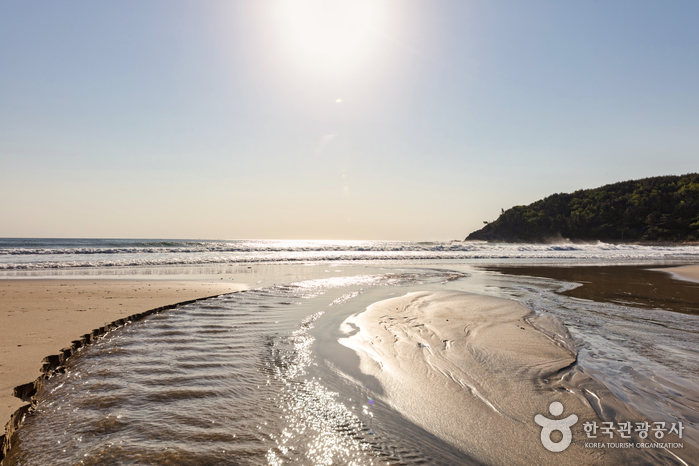

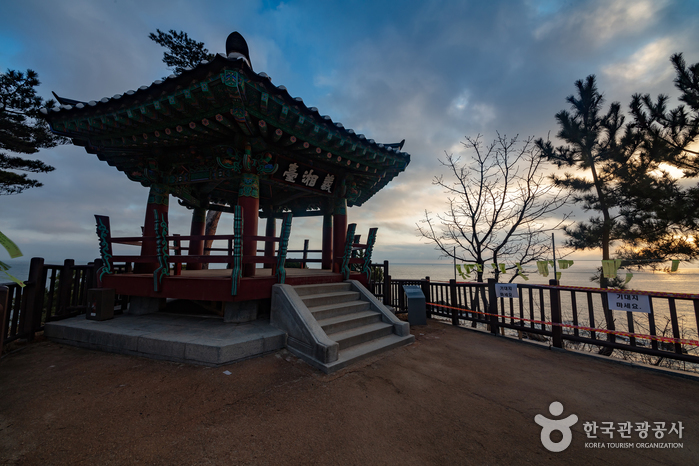
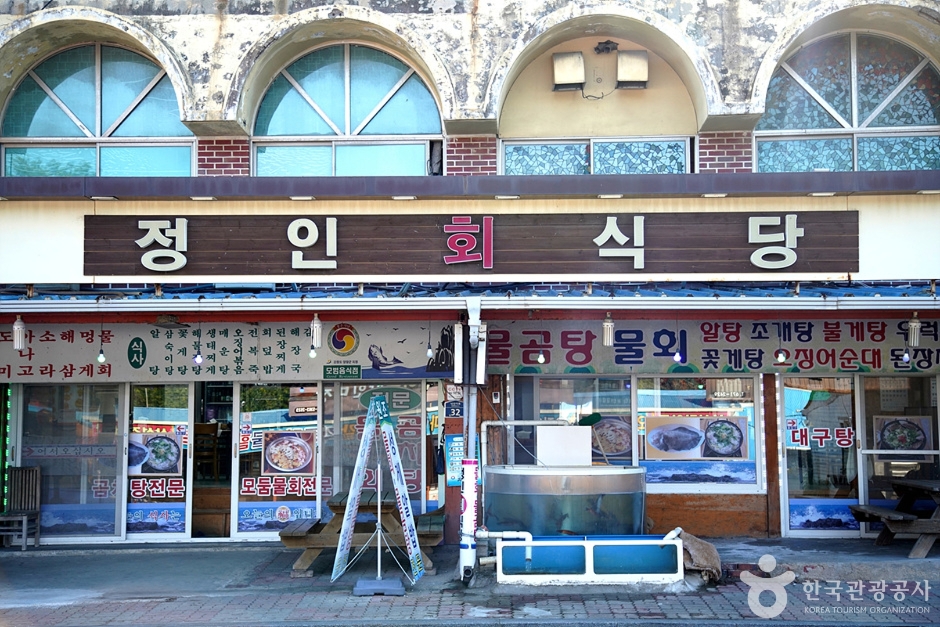
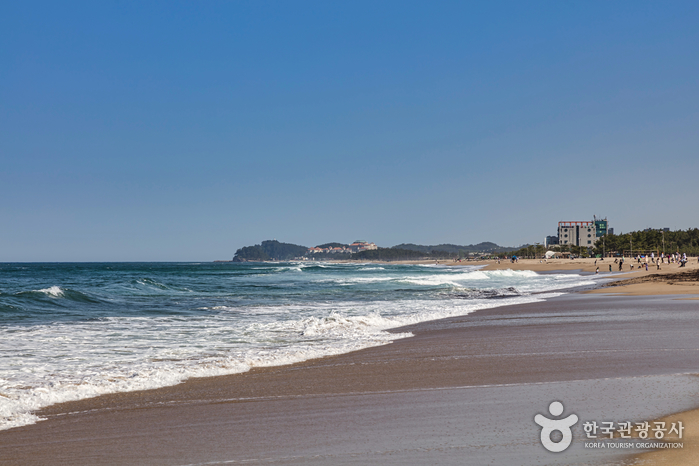
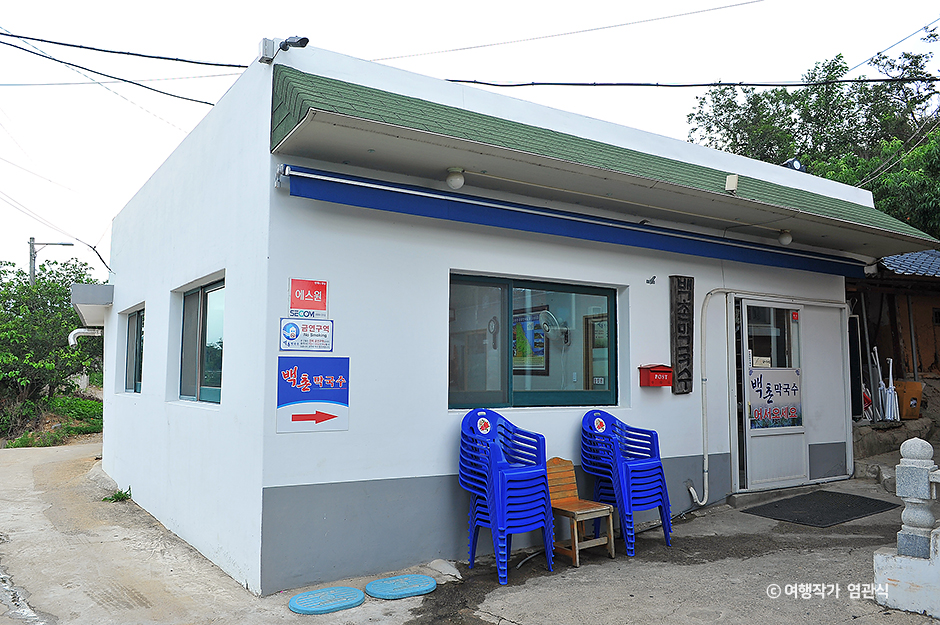
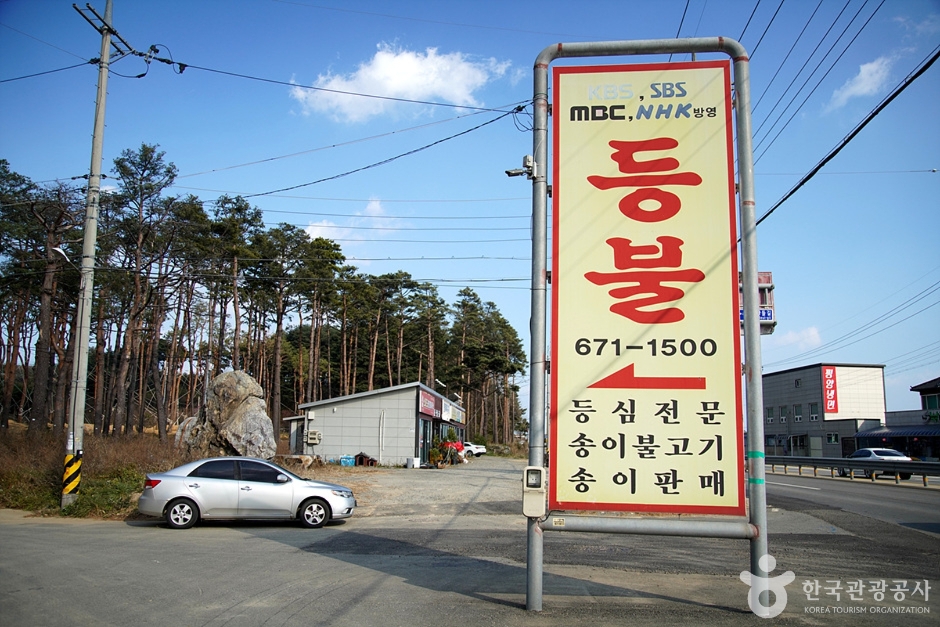
 English
English
 한국어
한국어 日本語
日本語 中文(简体)
中文(简体) Deutsch
Deutsch Français
Français Español
Español Русский
Русский